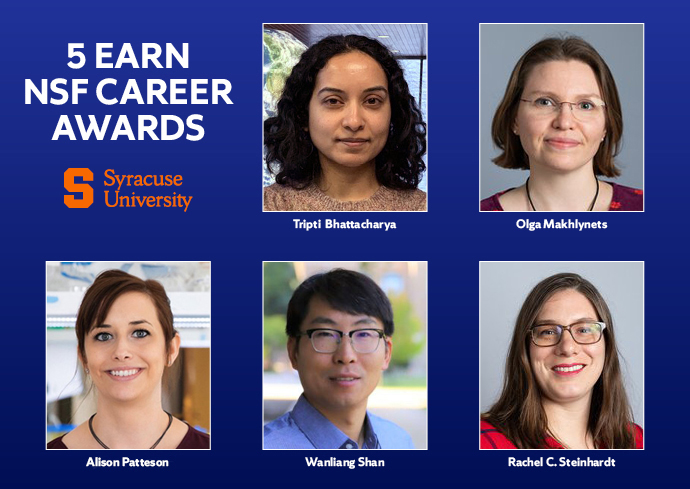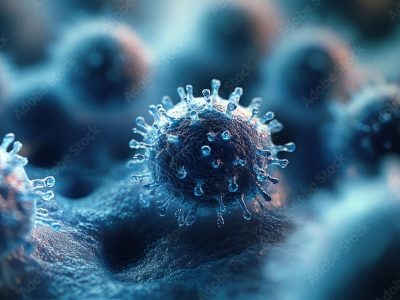Five faculty members have received National Science Foundation (NSF) Presidential Early Career Awards from the NSF’s Faculty Early Career Development (CAREER) Program in support of their innovative research.
The program supports early-career faculty who have the potential to serve as academic role models in research and education and to lead advances in the mission of their department or organization. The grants are considered the NSF’s most competitive awards in support of early-career faculty.
The 2023 recipients are:
- Tripti Bhattacharya, Thonis Family Professor of Earth and Environmental Sciences and assistant professor, College of Arts and Sciences (A&S)
- Olga Makhlynets, assistant professor of chemistry, A&S
- Alison Patteson, assistant professor of physics, A&S
- Wanliang Shan, assistant professor of mechanical and aerospace engineering, College of Engineering and Computer Science
- Rachel C. Steinhardt, assistant professor of chemistry, A&S
Bhattacharya is a climate scientist who uses evidence from the geological past, including former instances of climate change, to understand how rainfall will change in the future as a result of global warming. Her lab uses organic molecules, as well as climate models, to reconstruct ancient patterns of temperatures and rainfall. She is currently working on using the geological past to understand the processes that will drive extremes in droughts and flooding in the 21st century.
Makhlynets works at the intersection of chemistry and biology to produce “smart” biomaterials such as stimuli-responsive hydrogels that promote wound healing and antimicrobial hydrogels. She also studies how the human pathogen Streptococcus pneumoniae controls manganese levels inside cells and how the redesign of small and stable non-enzymatic proteins catalyzes chemical reactions.
Patteson researches the mechanical properties of living materials and how cells navigate the physical features of their environment. She is presently investigating the role of the structural protein vimentin in cell motility. She is testing the mechanisms by which vimentin protects the cell nucleus against damage caused by cellular stress and inflammation.
Shan researches the mechanics of tunable dry adhesion for the design of soft grippers that can manipulate delicate and small objects. Shan’s team previously explored ways to adjust the adhesion abilities of soft composite structures containing smart materials with tunable stiffness triggered by heat. He was granted a patent in spring 2022 for that discovery and has now filed a provisional patent for a new method that uses low pressure to achieve tunable adhesion.
Steinhardt designs and synthesizes molecular probes that bind native dopamine and serotonin receptors. The Steinhardt lab is interested in creating chemical tools to understand how these critical receptors (especially DRD2, 5HT2A, and 5HT2C) contribute to learning, mental illness and addiction and neurodegenerative disease.



